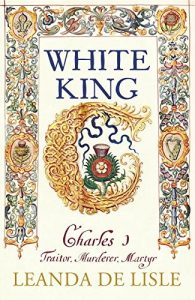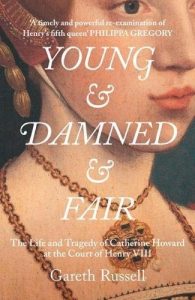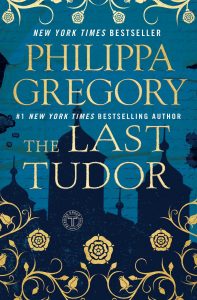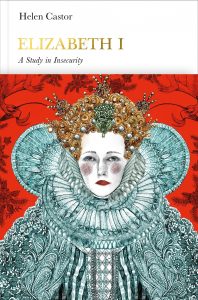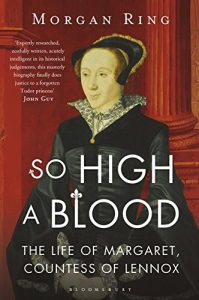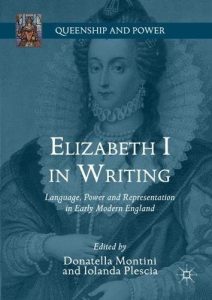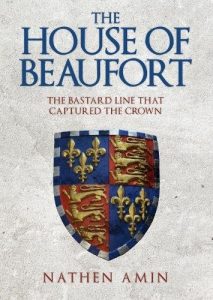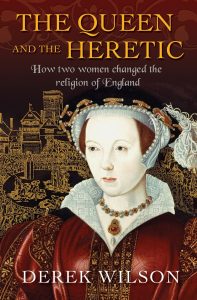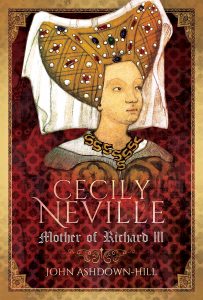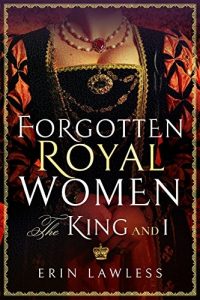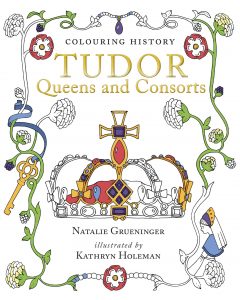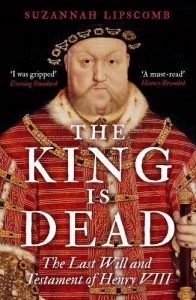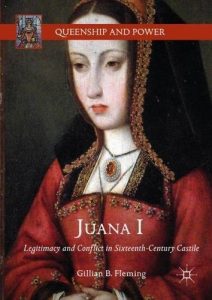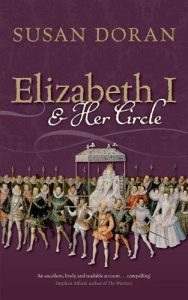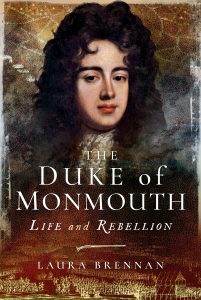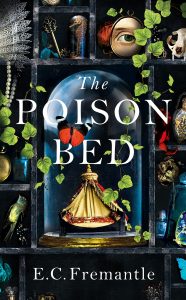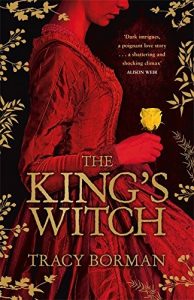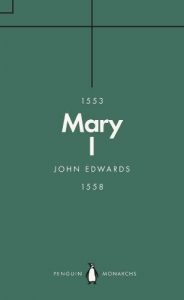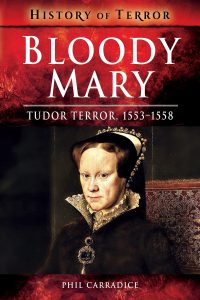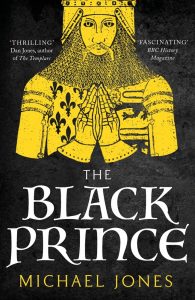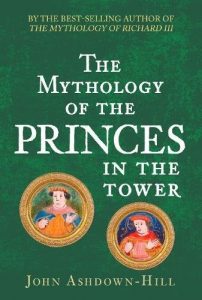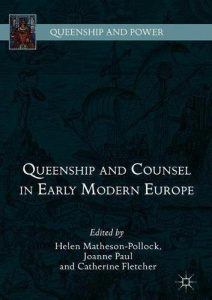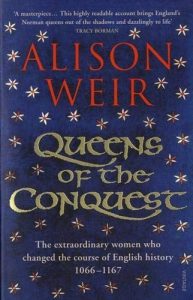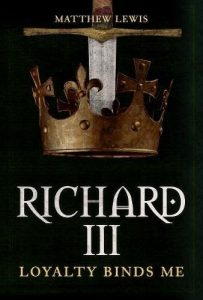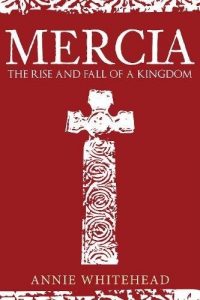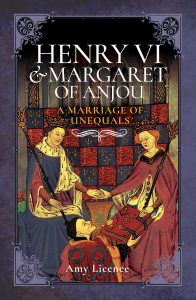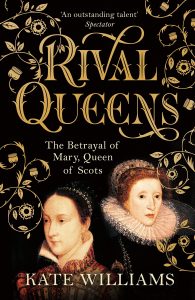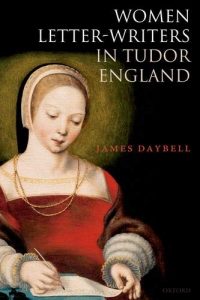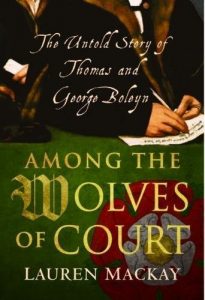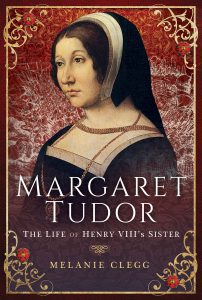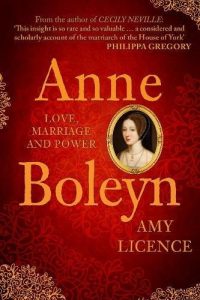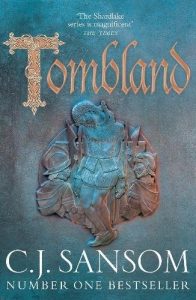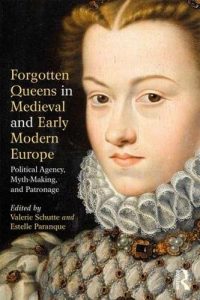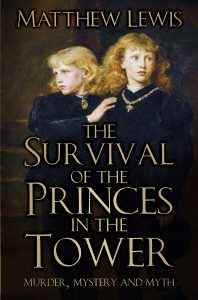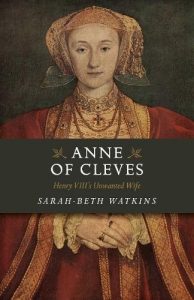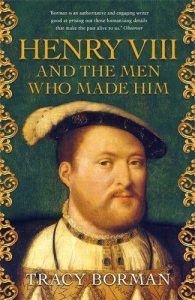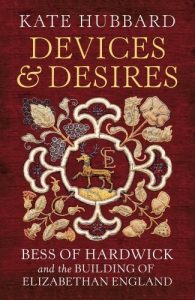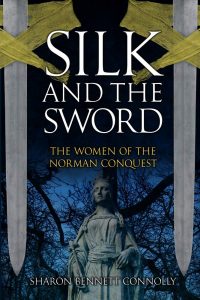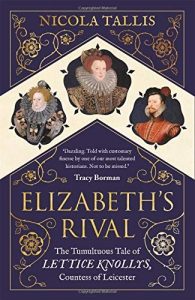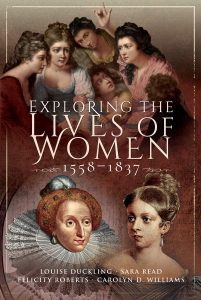11th January 2018 – White King: Charles I – Traitor, Murderer, Martyr by Leanda de Lisle
‘Drawing on lost royal letters from a closed archive, White King introduces us to Charles I as the monarch at the heart of a story for our times: a tale of populist politicians and the fall of the mighty, of religious hatreds and civil war, of the power of a new media and a maligned queen.
The reign of Charles I is one of the most dramatic in history. Yet Charles the man remains elusive. Too often he is recalled as weak and stupid, his wife, Henrietta Maria, as spoilt and silly: the cause of his ruin. This has bred not only contempt, but also indifference. Today’s readers have preferred the well-trodden reigns of the Tudors.
But Charles is revealed here as a complex and fascinating man who pays the price for bringing radical change; Henrietta Maria is a warrior queen and political player as extraordinary as any Tudor. Here too is the story of the cousins who befriended and betrayed them: Henry Holland, the king’s closest body servant, whose brother engineered the king’s fall, and Lucy Carlisle, immortalized in Alexandre Dumas’s Three Musketeers as the scheming Lady de Winter.
Epic in scale, White King is also a very human story, about the choices people make, and of the family man behind the image of the ‘white’ king, who on his execution was reviled as a traitor and murderer by some, but lauded by others as the people’s martyr.’
Further details – Amazon.co.uk
11th January 2018 – Young and Damned and Fair: The Life and Tragedy of Catherine Howard at the Court of Henry VIII (paper back) by Gareth Russell
‘In the five centuries since her death, Catherine Howard has been dismissed as ‘a wanton’, ‘inconsequential’ or a naïve victim of her ambitious family, but the story of her rise and fall offers not only a terrifying and compelling story of an attractive, vivacious young woman thrown onto the shores of history thanks to a king’s infatuation, but an intense portrait of Tudor monarchy in microcosm: how royal favour was won, granted, exercised, displayed, celebrated and, at last, betrayed and lost. The story of Catherine Howard is both a very dark fairy tale and a gripping political scandal.
Born into the nobility and married into the royal family, during her short life Catherine was almost never alone. Attended every waking hour by servants or companions, secrets were impossible to keep. With his research focus on Catherine’s household, Gareth Russell has written a narrative that unfurls as if in real-time to explain how the queen’s career ended with one of the great scandals of Henry VIII’s reign.
More than a traditional biography, this is a very human tale of some terrible decisions made by a young woman, and of complex individuals attempting to survive in a dangerous hothouse where the odds were stacked against nearly all of them. By illuminating Catherine’s entwined upstairs/downstairs worlds, and bringing the reader into her daily milieu, the author re-tells her story in an exciting and engaging way that has surprisingly modern resonances and offers a fresh perspective on Henry’s fifth wife.
Young and Damned and Fair is a riveting account of Catherine Howard’s tragic marriage to one of history’s most powerful rulers. It is a grand tale of the Henrician court in its twilight, a glittering but pernicious sunset during which the king’s unstable behaviour and his courtiers’ labyrinthine deceptions proved fatal to many, not just to Catherine Howard.’
Further details – Amazon.co.uk
15th February 2018 – La Reine Blanche: Mary Tudor, a Life in Letters by Sarah Bryson
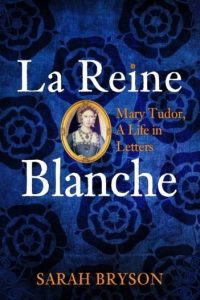
‘Mary’s childhood was overshadowed by the men in her life. Her father, Henry VII who took the throne from Richard III, her brother, Arthur, heir to the Tudor throne and her beloved brother, Henry VIII. These men and the beliefs held about women at the time helped to shape Mary’s life. She was trained to be a dutiful wife and at the age of eighteen Mary married the French king Louis XII, thirty-four years her senior.
When her husband died three months after the marriage, Mary took charge of her life and shaped her own destiny. As a young widow Mary blossomed, this was the opportunity to show the world the strong, self-willed, determined woman she always had been. She remarried for love and at great personal risk to herself. She loved and respected Catherine of Aragon and despised Anne Boleyn – again, a dangerous position to take up. Author Sarah Bryson has returned to primary sources, state papers and letters, to unearth the truth about this intelligent and passionate woman. This is the story of Mary Tudor through her own words.’
Further details – Amazon.co.uk
20th February 2018 – The Last Tudor by Philippa Gregory (paper back)
‘‘How long do I have?’ I force a laugh.
‘Not long,’ he says very quietly. ‘They have confirmed your sentence of death. You are to be beheaded tomorrow. We don’t have long at all.’
Jane Grey was Queen of England for nine days. Using her position as cousin to the deceased king, her father and his conspirators put her on the throne ahead of the king’s half-sister Mary, who quickly mustered an army, claimed her crown and locked Jane in the Tower. When Jane refused to betray her Protestant faith, Mary sent her to the executioner’s block. There Jane turned her father’s greedy, failed grab for power into her own brave and tragic martyrdom.
‘Learn you to die’ is the advice that Jane gives in a letter to her younger sister Katherine, who has no intention of dying. She intends to enjoy her beauty and her youth and find love. But her lineage makes her a threat to the insecure and infertile Queen Mary and, when Mary dies, to her sister Queen Elizabeth, who will never allow Katherine to marry and produce a potential royal heir before she does. So when Katherine’s secret marriage is revealed by her pregnancy, she too must go to the Tower.
‘Farewell, my sister,’ writes Katherine to the youngest Grey sister, Mary. A beautiful dwarf, disregarded by the court, Mary finds it easy to keep secrets, especially her own, while avoiding Elizabeth’s suspicious glare. After watching her sisters defy the queen, Mary is aware of her own perilous position as a possible heir to the throne. But she is determined to command her own destiny and be the last Tudor to risk her life in matching wits with her ruthless and unforgiving cousin Elizabeth.’
Further details – Philippa Gregory
Further details – Amazon.co.uk
1st March 2018 – Elizabeth I (Penguin Monarchs): A Study in Insecurity by Helen Castor
‘In the popular imagination, as in her portraits, Elizabeth I is the image of monarchical power. The Virgin Queen ruled over a Golden Age: the Spanish Armada was defeated and England’s enemies scattered; English explorers reached almost to the ends of the earth; a new Church of England rose from the ashes of past conflict, and the English Renaissance bloomed in the genius of Shakespeare, Spenser and Sidney. But the image is also armour. In this illuminating new account of Elizabeth’s reign, Helen Castor shows how England’s iconic queen was shaped by profound and enduring insecurity-an insecurity which was both a matter of practical political reality and personal psychology. From her precarious upbringing at the whim of a brutal, capricious father and her perilous accession after his death, to the religious division that marred her state and the failure to marry that threatened her line, Elizabeth lived under constant threat. But, facing down her enemies with a compellingly inscrutable public persona, the last and greatest of the Tudor monarchs would become a timeless, fearless queen.’
Further details – Amazon.co.uk
8th March 2018 – So High a Blood: The Life of Margaret, Countess of Lennox by Morgan Ring (paper back)
‘’Who hopes still constantly with patience shall obtain victory in their claim’
Sometime heir to the English throne, courtier in danger of losing her head, spy-mistress and would-be architect of a united Catholic Britain: Lady Margaret Douglas is the Tudor whose life demands a wider telling.
As niece to Henry VIII and half-sister to James V of Scotland, the beautiful and Catholic Margaret held a unique and precarious position in the English court. Throughout her life, she was to navigate treacherous waters: survival necessitated it. Yet Margaret was no passive pawn or bit-part player. As the Protestant Reformations unfolded across the British Isles and the Tudor monarchs struggled to produce heirs, she had ambitions of her own. She wanted to see her family ruling a united, Catholic Britain. When her niece Mary, Queen of Scots was left a widow, Margaret saw her chance. Through a thoroughly Machiavellian combination of timing, networking and family connections, she set in motion a chain of shattering events that would one day see her descendants succeed to the crowns of England, Ireland and Scotland.
Morgan Ring has revived the story of Lady Margaret Douglas to vivid and captivating effect. From a richly detailed backdrop of political and religious turbulence Margaret emerges, full of resilience, grace and intelligence. Drawing on previously unexamined archival sources, So High a Blood presents a fascinating and authoritative portrait of a woman with the greatest of ambitions for her family, her faith and her countries.’
Further details – Amazon.co.uk
21st March 2018 – Elizabeth I in Writing: Language, Power and Representation in Early Modern England (Queenship and Power) edited by Donatella Montini and Iolanda Plescia
‘This collection investigates Queen Elizabeth I as an accomplished writer in her own right as well as the subject of authors who celebrated her. With innovative essays from Brenda M. Hosington, Carole Levin, and other established and emerging experts, it reappraises Elizabeth’s translations, letters, poems and prayers through a diverse range of approaches to textuality, from linguistic and philological to literary and cultural-historical. The book also considers Elizabeth as “authored,” studying how she is reflected in the writing of her contemporaries and reconstructing a wider web of relations between the public and private use of language in early modern culture. Contributions from Carlo M. Bajetta, Guillaume Coatelen and Giovanni Iamartino bring the Queen’s presence in early modern Italian literary culture to the fore. Together, these essays illuminate the Queen in writing, from the multifaceted linguistic and rhetorical strategies that she employed, to the texts inspired by her power and charisma.’
Further details – Amazon.co.uk
5th April 2018 – Daughters of the Winter Queen: Four Remarkable Sisters and the Enduring Legacy of Mary, Queen of Scots by Nancy Goldstone
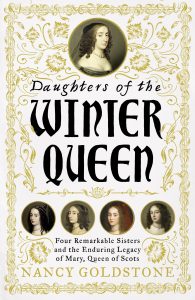
‘From the author of The Rival Queens, a lively group biography of Elizabeth Stuart, the Winter Queen, and her four daughters, whose lives paint a vivid picture of the upheavals of 17th-century Europe.
Set in the tumultuous seventeenth century, DAUGHTERS OF THE WINTER QUEEN tells the delicious and dramatic stories of Elizabeth Stuart, the Winter Queen–granddaughter of the doomed Mary, Queen of Scots–and her four unforgettable daughters.
Like Austen’s Bennets or Louisa May Alcott’s Marches, each sister had a unique attribute that set her apart from the rest: Elizabeth was the scholar, Louise the artist, Henrietta the beauty, and Sophia the writer. But unlike those fictional heroines, the daughters of the Winter Queen lived on a much grander scale. Their backdrop was all of Europe and the twists of their stories trace the course of history itself.
Their journey begins in Scotland and England and sweeps through the great courts and palaces of Europe and encompasses warfare, political intrigue, illicit love affairs, devastating betrayal, hard-won triumph, and even a murder mystery.
DAUGHTERS OF THE WINTER QUEEN is the saga of five extraordinary women and a family that, by refusing to surrender, survived to change the shape of our world.’
Further details – Amazon.co.uk
Further information – Nancy Goldstone
5th April 2018 – The Prince Who Would Be King by Sarah Fraser (paper back)
‘Henry Stuart, Prince of Wales was once the hope of Britain. Eldest son to James VI of Scotland, James I of England, Henry was the epitome of heroic Renaissance princely virtue, his life set against a period about as rich and momentous as any.
Educated to rule, Henry was interested in everything. His court was awash with leading artists, musicians, writers and composers such as Ben Jonson and Inigo Jones. He founded a royal art collection of European breadth, amassed a vast collection of priceless books, led grand renovations of royal palaces and mounted operatic, highly politicised masques.
But his ambitions were even greater. He embraced cutting-edge science, funded telescopes and automata, was patron of the NorthWest Passage Company and wanted to sail through the barriers of the known world to explore new continents. He reviewed and modernised Britain’s naval and military capacity and in his advocacy for the colonisation of North America he helped to transform the world.
At his death aged only eighteen, and considering himself to be as much a European as British, he was preparing to stake his claim to be the next leader of Protestant Christendom in the struggle to resist a resurgent militant Catholicism.
In this rich and lively book, Sarah Fraser seeks to restore Henry to his place in history. Set against the bloody traumas of the Thirty Years’ War, the writing of the King James Bible, the Gunpowder Plot and the dark tragedies pouring from Shakespeare’s quill, Henry’s life is the last great forgotten Jacobean tale: the story of a man who, had he lived, might have saved Britain from King Charles I, his spaniels and the Civil War with its appalling loss of life his misrule engendered.
Further details – Amazon.co.uk
15th April 2018 – The House of Beaufort: The Bastard Line that Captured the Crown (Paperback) by Nathen Amin
‘The Wars of the Roses were a tumultuous period in English history, with family fighting family over the greatest prize in the kingdom – the throne of England. But what gave the eventual victor of these brutal and complex wars, Henry Tudor, the right to claim the crown? What made his Beaufort mother the great heiress of medieval England, and how exactly did an illegitimate line come to challenge the English monarchy?
While the Houses of York and Lancaster fought brutally for the crown, other noble families of the kingdom also played integral roles in the wars; grand and prestigious names like the Howards, Mowbrays, Nevilles and Percys were intimately involved in the conflict, but none symbolised the volatile nature of the period quite like the House of Beaufort. Their rise, fall, and rise again is the story of England during the fifteenth century, a dramatic century of war, intrigue and scandal both at home and abroad. Many books have been written about individual members of the dynasty, but never has the whole family been explored as one.
This book uncovers the rise of the Beauforts from bastard stock of John of Gaunt, Duke of Lancaster, to esteemed companions of their cousin Henry V, celebrated victor of Agincourt, and tracks their chastening fall with the House of Lancaster during the 1460s and 1470s. The hopes and fortunes of the family gradually came to rest upon the shoulders of a teenage widow named Margaret Beaufort and her young son Henry. From Margaret would rise the House of Tudor, the most famous of all England’s royal houses and a dynasty that owed its crown to the blood of its forebears, the House of Beaufort. From bastards to princes, the Beauforts are medieval England’s most captivating family.’
Further details – Amazon.co.uk
20th April 2018 – The Queen and the Heretic: How two women changed the religion of England by Derek Wilson
‘The dual biography of two remarkable women – Catherine Parr and Anne Askew. One was the last queen of a powerful monarch, the second a countrywoman from Lincolnshire. But they were joined together in their love for the new learning – and their adherence to Protestantism threatened both their lives. Both women wrote about their faith, and their writings are still with us. Powerful men at court sought to bring Catherine down, and used Anne Askew’s notoriety as a weapon in that battle. Queen Catherine Parr survived, while Anne Askew, the only woman to be racked, was burned to death. This book explores their lives, and the way of life for women from various social strata in Tudor England.’
Further details – Derek Wilson
Further details – Amazon.co.uk
30th April 2018 – Cecily Neville: Mother of Richard III by John Ashdown-Hill
‘Wife to Richard, Duke of York, mother to Edward IV and Richard III, and aunt to the famous Kingmaker , Richard, Earl of Warwick, Cecily Neville was a key player on the political stage of fifteenth-century Britain England. Mythologically rumoured to have been known as the Rose of Raby because of her beauty and her birth at Raby Castle, and as Proud Cis because of her vanity and fiery temper, Cecily s personality and temperament have actually been highly speculated upon. In fact, much of her life is shrouded in mystery. Putting aside Cecily s role as mother and wife, who was she really? Matriarch of the York dynasty, she navigated through a tumultuous period and lived to see the birth of the future Henry VIII. From seeing the house of York defeat their Lancastrian cousins; to witnessing the defeat of her own son, Richard III, at the battle of Bosworth, Cecily then saw one of her granddaughters become Henry VII s queen consort. Her story is full of controversy and the few published books on her life are full of guess-work. In this highly original history, Dr John Ashdown-Hill seeks to dispel the myths surrounding Cecily using previously unexamined contemporary sources.;
Further details – Pen and Sword History
Further details – Amazon.co.uk
30th April 2018 – Forgotten Royal Women: The King and I by Erin Lawless
‘Great women are hidden behind great men, or so they say, and no man is greater than the king. For centuries, royal aunts, cousins, sisters and mothers have watched history unfold from the shadows, their battlefields the bedchamber or the birthing room, their often short lives remembered only through the lens of others. But for those who want to hear them, great stories are still there to be told: the medieval princess who was kidnapped by pirates; the duchess found guilty of procuring love potions; the queen who was imprisoned in a castle for decades. Bringing thirty of these royal women out of the shadows, along with the footnotes of their families, this collection of bite-sized biographies will tell forgotten tales and shine much needed light into the darkened corners of women’s history.’
Further details – Pen & Sword Books
Further details – Amazon.co.uk
1st May 2018 – Colouring History: Tudor Queens and Consorts by Natalie Grueninger and Kathryn Holeman
‘Delve into the dazzling-and dangerous-world of Tudor queens and consorts with this lavishly illustrated colouring book for grown-ups. Featuring an array of beautiful illustrations inspired by contemporary paintings and manuscripts, it’s sure to delight even the most discerning Tudor history buff and colouring aficionado. Colour your way to peace and inner harmony, while indulging your passion for Tudor history.’
Further details – Amazon.co.uk
17th May 2018 – The King is Dead: The Last Will and Testament of Henry VIII’ by Suzannah Lipscomb (paper back)
‘On 28 January 1547, the sickly and obese King Henry VIII died at Whitehall. Just hours before his passing, his last will and testament had been read, stamped and sealed. The will confirmed the line of succession as Edward, Mary and Elizabeth; and, following them, the Grey and Suffolk families. It also listed bequests to the king’s most trusted councillors and servants.
Henry’s will is one of the most intriguing and contested documents in British history. Historians have disagreed over its intended meaning, its authenticity and validity, and the circumstances of its creation. As well as examining the background to the drafting of the will and describing Henry’s last days, Suzannah Lipscomb offers her own, illuminating interpretation of one of the most significant constitutional documents of the Tudor period.’
Further details – Amazon.co.uk
17th May 2018 – Juana I: Legitimacy and Conflict in Sixteenth-Century Castile (Queenship and Power) by Gillian B Fleming
‘This book examines the deep and lengthy crisis of legitimacy triggered by the death of Prince Juan of Castile and Aragon in 1497 and the subsequent ascent of Juana I to the throne in 1504. Confined by historiography and myth to the madwoman’s attic, Juana emerges here as a key figure at the heart of a period of tremendous upheaval, reaching its peak in the war of the Comunidades, or comunero uprising of 1520–1522. Gillian Fleming traces the conflicts generated by the ambitions of Juana’s father, husband and son, and the controversial marginalisation and imprisonment of Isabel of Castile’s legitimate heir. Analysing Juana’s problems and strategies, failures and successes, Fleming argues that the period cannot be properly understood without taking into account the long shadow that Juana I cast over her kingdoms and over a crucial period of transition for Spain and Europe.’
Further details – Amazon.co.uk
24th May 2018 – Elizabeth I and Her Circle by Susan Doran (paper back)
‘This is the inside story of Elizabeth I’s inner circle and the crucial human relationships which lay at the heart of her personal and political life. Using a wide range of original sources ― including private letters, portraits, verse, drama, and state papers ― Susan Doran provides a vivid and often dramatic account of political life in Elizabethan England and the queen at its centre, offering a deeper insight into Elizabeth’s emotional and political conduct ― and challenging many of the popular myths that have grown up around her.
It is a story replete with fascinating questions. What was the true nature of Elizabeth’s relationship with her father, Henry VIII, especially after his execution of her mother? What was the influence of her step-mothers on Elizabeth’s education and religious beliefs? How close was she really to her half-brother Edward VI ― and were relations with her half-sister Mary really as poisonous as is popularly assumed? And what of her relationship with her Stewart cousins, most famously with Mary Queen of Scots, executed on Elizabeth’s orders in 1587, but also with Mary’s son James VI of Scotland, later to succeed Elizabeth as her chosen successor?
Elizabeth’s relations with her family were crucial, but almost as crucial were her relations with her courtiers and her councillors (her ‘men of business’). Here again, the story unravels a host of fascinating questions. Was the queen really sexually jealous of her maids of honour? What does her long and intimate relationship with the Earl of Leicester reveal about her character, personality, and attitude to marriage? What can the fall of Essex tell us about Elizabeth’s political management in the final years of her reign? And what was the true nature of her personal and political relationship with influential and long-serving councillors such as the Cecils and Sir Francis Walsingham?’
Further details – Amazon.co.uk
30th May 2018 – The Duke of Monmouth: Life and Rebellion by Laura Brennan
‘He was the illegitimate son of a king, a gallant and brave military hero, charming, handsome and well loved both within the court and with women; James Scott, Duke of Monmouth, had the life many would have envied in the seventeenth century. Monmouth lived in an age that was on the cusp of modernity. He lived through some of the biggest events and scandals of seventeenth century British history, including: the Restoration of his father, King Charles II; The Great Fire of London in 1666 and the last great plague to sweep through London killing thousands. James also experienced the political scandal of the Popish Plot; became embroiled in the foiled Rye House Plot, and was at the centre of the Exclusion Crisis, which was a major catalyst for the modern creation of our party political system. But what would turn the beloved darling of the Restoration court into a leading rebel?
Further details – Pen and Sword History
Further details – Amazon.co.uk
Further details – Laura Brennan
14th June 2018 – The Poison Bed by Elizabeth Fremantle
‘A king, his lover and his lover’s wife. One is a killer.
In the autumn of 1615 scandal rocks the Jacobean court when a celebrated couple are imprisoned on suspicion of murder. She is young, captivating and from a notorious family. He is one of the richest and most powerful men in the kingdom.
Some believe she is innocent; others think her wicked or insane. He claims no knowledge of the murder. The king suspects them both, though it is his secret at stake.
Who is telling the truth? Who has the most to lose? And who is willing to commit murder?’
Further details – Elizabeth Fremantle
Further details – Amazon.co.uk
14th June 2018 – The King’s Witch by Tracy Borman
‘As she helps to nurse the dying Queen Elizabeth, Frances Gorges longs for the fields and ancient woods of her parents’ Hampshire estate, where she has learned to use the flowers and herbs to become a much-loved healer.
Frances is happy to stay in her beloved countryside when the new King arrives from Scotland, bringing change, fear and suspicion. His court may be shockingly decadent, but James’s religion is Puritan, intolerant of all the old ways; he has already put to death many men for treason and women for witchcraft.
So when her ambitious uncle forcibly brings Frances to court, she is trapped in a claustrophobic world of intrigue and betrayal – and a ready target for the twisted scheming of Lord Cecil, the King’s first minister.
Surrounded by mortal dangers, Frances finds happiness only with the precocious young Princess Elizabeth, and Tom Wintour, the one courtier she can trust.
Or can she?
Further details – Tracy Borman
Further details – Amazon.co.uk
28th June 2018 – Mary I (Penguin Monarchs): The Daughter of Time (Paperback) by John Edwards
‘The elder daughter of Henry VIII, Mary I (1553-58) became England’s ruler on the unexpected death of her brother Edward VI. Her short reign is one of the great potential turning points in the country’s history. As a convinced Catholic and the wife of Philip II, king of Spain and the most powerful of all European monarchs, Mary could have completely changed her country’s orbit, making it a province of the Habsburg Empire and obedient again to Rome.
These extraordinary possibilities are fully dramatized in John Edward’s superb short biography. The real Mary I has almost disappeared under the great mass of Protestant propaganda that buried her reputation during her younger sister, Elizabeth I’s reign. But what if she had succeeded?’
Further details – Amazon.co.uk
28th June 2018 – Edward VI (Penguin Monarchs): The Last Boy King (Paperback) by Stephen Alford
‘Edward VI, the only son of Henry VIII, became king at the age of nine and died wholly unexpectedly at the age of fifteen. All around him loomed powerful men who hoped to use the child to further their own ends, but who were also playing a long game – assuming that Edward would long outlive them and become as commanding a figure as his father had been.
Stephen Alford’s wonderful book gives full play to the murky, sinister nature of Edward’s reign, but is also a poignant account of a boy learning to rule, learning to enjoy his growing power and to come out of the shadows of the great aristocrats around him. England’s last child monarch, Edward would have led his country in a quite different direction to the catastrophic one caused by his death.’
Further details – Amazon.co.uk
30th June 2018 – Bloody Mary: Tudor Terror, 1553-1558 (A History of Terror) by Phil Carradice (paper back)
‘When Mary Tudor, eldest daughter of Henry VIII, succeeded to the throne of England in 1553 it was with wild rejoicing and a degree of popularity rarely seen on the accession of a British monarch. Yet at her death five years later she was almost universally reviled and hated by her people so much so that she was posthumously awarded the sobriquet Bloody Mary. Mary’s revenge on the church and on a religion she hated was swift and total. Noblemen like the Duke of Northumberland, would-be queens like Lady Jane Grey, churchmen like Thomas Cranmer and bishops Latimer and Ridley, Mary’s fires or the executioner’s axe ended the lives of all of them. During her brief reign she restored the Catholic faith to England and had over 280 Protestant martyrs burned at the stake. For a reign that looked so promising Mary’s brief period in power brought the greatest officially sanctioned religious bloodletting the country had ever seen. And at the end, the stench of the execution fires and the grey smoke that settled like a pall across the country seemed to epitomize the reactionary forces that had assumed control.’
Further details – Amazon.co.uk
12th July 2018 – The Black Prince by Michael Jones (paper back)
‘As a child he was given his own suit of armour; in 1346, at the age of 16, he helped defeat the French at Crécy; and in 1356 he captured the King of France at Poitiers. For the chronicler Jean Froissart, ‘He was the flower of all chivalry’; for the Chandos Herald, who fought with him, he was ‘the embodiment of all valour’. Edward of Woodstock, eldest son and heir of Edward III of England, better known as ‘the Black Prince’, was England’s pre-eminent military leader during the first phase of the Hundred Years War.
Michael Jones uses contemporary chronicles and documentary material, including the Prince’s own letters and those of his closest followers, to tell the tale of an authentic English hero and to paint a memorable portrait of warfare and society in the tumultuous fourteenth century.
15th July 2018 – The Mythology of the Princes in the Tower by John Ashdown-Hill
‘When did the term ‘Princes in the Tower’ come into usage, who invented it, and to whom did it refer? To the general public the term is synonymous with the boy King Edward V and his younger brother Richard, Duke of York, sons of Edward IV. But is this correct? Were those boys genuinely held against their will in the Tower? Would their mother, Elizabeth Widville, have released her young son Richard from sanctuary with her if she believed she would be putting his life in danger?
The children of Edward IV were declared bastards in 1483 and Richard, Duke of Gloucester, was offered the throne. But, after Bosworth, in order to marry their sister Elizabeth of York, Henry VII needed to make her legitimate again. If the boys were alive at that time then Edward V would once again have become the rightful king.
Following discovery of some bones in the Tower in 1674 they were interred in a marble urn in Westminster Abbey as the remains of the two sons of Edward IV. What evidence exists, or existed at the time, to prove these indeed were the remains of two 15th-century male children? What did the 1933 urn opening reveal?
Only one man can answer these questions and that is John Ashdown-Hill. By working exclusively with his own team of geneticists and exploring the mtDNA haplogroup of the living all-female-line collateral descendant of Edward V and his brother Richard, who has now been traced, the author has the final say.’
Further details – Amberley Publishing
Further details – Amazon.co.uk
16th August 2018 – Queenship and Counsel in Early Modern Europe edited by Helen Matheson-Pollock, Joanne Paul and Catherine Fletcher
‘The discourse of political counsel in early modern Europe depended on the participation of men, as both counsellors and counselled. Women were often thought too irrational or imprudent to give or receive political advice―but they did in unprecedented numbers, as this volume shows. These essays trace the relationship between queenship and counsel through over three hundred years of history. Case studies span Europe, from Sweden and Poland-Lithuania via the Habsburg territories to England and France, and feature queens regnant, consort and regent, including Elizabeth I of England, Catherine Jagiellon of Sweden, Catherine de’ Medici and Anna of Denmark. They draw on a variety of innovative sources to recover evidence of queenly counsel, from treatises and letters to poetry, masques and architecture. For scholars of history, politics and literature in early modern Europe, this book enriches our understanding of royal women as political actors.’
Further details – Palgrave Queenship and Power
Further details – Amazon.co.uk
30th August 2018 – Queens of the Conquest: England’s Medieval Queens (Paperback) by Alison Weir
‘Love, murder, war, betrayal
This is the story of the five extraordinary queens who helped the Norman kings of England rule their dominions. Recognised as equal sharers in the royal authority, their story is packed with tragedy, high drama, even comedy.
Heroines, villains, stateswomen, lovers
Beginning with Matilda of Flanders, who supported William the Conqueror in his invasion of England in 1066, and culminating in the turbulent life of the Empress Maud, whoc claimed to be queen of England in her own right and fought a bitter war to the end, the five Norman queens are revealed as hugely influential figures and fascinating characters.
In Alison Weir’s hands, these pioneering women reclaim their rightful roles at the centre of English history.’
Further details – Amazon.co.uk
15th September 2018 – Richard III: Loyalty Binds Me by Matt Lewis
‘King Richard III remains one of the most controversial figures in British history. Matthew Lewis’s new biography aims to become a definitive account of his life by exploring what is known of his childhood and the impacts it had on his personality and view of the world around him. From a childhood of privilege, he would be cast into insecurity and exile only to become a royal prince, all before his tenth birthday.
As Richard spends his teenage years under the watchful gaze of his older brother, King Edward IV, he is eventually placed in the household of their cousin, the Earl of Warwick, remembered as the Kingmaker, but as the relationship between a king and his most influential magnate breaks down, Richard is compelled to make a choice that defines more than a decade of his life when the House of York fractures. After another period in exile, Richard returns to become most powerful nobleman in England, controlling the North on his brother’s behalf. The work he involves himself in during the years that follow demonstrates a drive and commitment, but also a dangerous naiveté. Richard becomes immersed in and a focal point of northern life, culminating in a campaign into Scotland that leads all the way to Edinburgh.
When crisis hits England in 1483, it is to Richard that his older brother turns on his death bed. The events of 1483 remain contentious and hotly debated, but by understanding the Richard who began that year, it will become clearer what may have driven some of his actions and decisions. As king, the obsessions that drove his work in the north move to the national stage. Having developed a close and deeply loyal group of followers as Duke of Gloucester, Richard must try to emulate that across a nation pushed to caution. This book will seek out the man behind the myths, not look to create the monster of Shakespeare that has clung to the popular imagination for centuries, nor to become lost in admiration. Returning to primary sources and considering the issues of evidence available, this new life aims to present a real man living in difficult times.’
Further details – Amberley Books
Further details – Matthew Lewis
Further details – Amazon.co.uk
15th September 2018 – Mercia: The Rise and Fall of a Kingdom by Annie Whitehead
‘Many people know about Wessex, the ‘Last Kingdom’ of the Anglo-Saxons to fall to the Northmen, but another kingdom, Mercia, once enjoyed supremacy over not only Wessex, but all of the Anglo-Saxon kingdoms. At its zenith Mercia controlled what is now Birmingham and London ‒ and the political, commercial paramountcy of the two today finds echoes in the past.
Those interested in the period will surely have heard of Penda, Offa, and Æthelflæd, Lady of the Mercians ‒ but remarkably there is no single book that tells their story in its entirety, the story of the great kingdom of the midlands.
Historically, the records are in two halves, pre- and post-Viking, in the way they have been preserved. Pre-Viking, virtually all the source material was written by the victims, or perceived victims, of Mercian aggression and expansion. Post-Viking, the surviving documents tend to hail from places which were not sacked or burned by the Northmen, particularly from Wessex, the traditional enemy of Mercia. The inclusion of those records here allows for the exploration of Mercia post-924.
Mercia ceased to be a kingdom when Alfred the Great came to power, but its history did not end there. Examining the roles of the great ealdormen in the anti-monastic reaction of the tenth century, through the treachery of Eadric Streona in the eleventh, and the last, brave young earls who made a stand against William the Conqueror, this book shows the important role the Mercians played in the forging of the English nation.’
Further details – Amazon.co.uk
Further details – Amazon.co.uk
Further details – Annie Whitehead
17th September 2018 – Henry VI and Margaret of Anjou: A Marriage of Unequals by Amy Licence
‘He became king before his first birthday, inheriting a vast empire from his military hero father; she was the daughter of a king without power, who made an unexpected marriage at the age of fifteen. Almost completely opposite in character, together they formed an unlikely but complimentary partnership. Henry VI and Margaret of Anjou have become famous as the Lancastrian king and queen who were deposed during the Wars of the Roses but there is so much more to their story. The political narrative of their years together is a tale of twists and turns, encompassing incredible highs, when they came close to fulfilling their desires, and terrible, heart-breaking lows. Personally, their story is an intriguing one that raises may questions. Henry was a complex, misunderstood man, enlightened and unsuited to his times and the pressures of kingship. In the end, overcome by fortune and the sheer determination of their enemies, their alliance collapsed. England simply wasn’t ready for a gentle king like Henry, or woman like Margaret who defied contemporary stereotypes of gender and queenship. History has been a harsh judge to this royal couple. In this discerning dual biography, Amy Licence leads the way in a long-overdue re-evaluation of their characters and contributions during a tumultuous and defining period of British history.
Further details – Amazon.co.uk
20th September 2018 – Rival Queens: The Betrayal of Mary, Queen of Scots by Kate Williams
‘Elizabeth and Mary: cousins, rivals, queens. They loved each other, they hated each other – they could never escape one another.
Kate Williams’s thrilling new history tells the story of Elizabeth I of England and her betrayal of Mary, Queen of Scots. At the end of the Tudor era, here were two women on two thrones. But this was a man’s world and many believed that no woman should govern. All around Elizabeth and Mary were sycophants, spies and detractors who wanted their power, their favour and their bodies. And so they became one another’s closest confidants in the struggle to be both women and queens.
Alliances were few, but for many years theirs survived – until the forces rising against them, and the struggles of love and dynasty, drove them apart. It was a schism that would end in secret assassination plots, devastating betrayal and, eventually, the signing of Mary’s death warrant in Elizabeth’s hand.
Kate Williams’ Rivals Queens offers an electrifying new perspective on Elizabeth and Mary, and the most important relationship of their lives – that which they had with one another.’
Further details – Amazon.co.uk
27th September 2018 – Women Letter-Writers in Tudor England (Paperback) by James Daybell
‘Women Letter-Writers in Tudor England represents one of the most comprehensive study of women’s letters and letter-writing during the early modern period to be undertaken, and acts as an important corrective to traditional ways of reading and discussing letters as private, elite, male, and non-political. Based on over 3,000 manuscript letters, it shows that letter-writing was a larger and more socially diversified area of female activity than has been hitherto assumed. In that letters constitute the largest body of extant sixteenth-century women’s writing, the book initiates a reassessment of women’s education and literacy in the period. As indicators of literacy, letters yield physical evidence of rudimentary writing activity and abilities, document ‘higher’ forms of female literacy, and highlight women’s mastery of formal rhetorical and epistolary conventions.
Women Letter-Writers in Tudor England also stresses that letters are unparalleled as intimate and immediate records of family relationships, and as media for personal and self-reflective forms of female expression. Read as documents that inscribe social and gender relations, letters shed light on the complex range of women’s personal relationships, as female power and authority fluctuated, negotiated on an individual basis. Furthermore, correspondence highlights the important political roles played by early modern women. Female letter-writers were integral in cultivating and maintaining patronage and kinship networks; they were active as suitors for crown favour, and operated as political intermediaries and patrons in their own right, using letters to elicit influence. Letters thus help to locate differing forms of female power within the family, locality and occasionally on the wider political stage, and offer invaluable primary evidence from which to reconstruct the lives of early modern women.’
Further details – Oxford University Press
Further details – Amazon.co.uk
30th September 2018 – Among the Wolves of Court: The Untold Story of Thomas and George Boleyn by Lauren MacKay
‘Thomas and George Boleyn – the father and brother of Anne Boleyn and heads of one of the most powerful infamous dynasties in English history. Already key figures in Henry VIII’s court, with the ascent of Anne to the throne in 1533 these two men became the most important players on the Tudor stage, with direct access to royalty, and with it, influence. Both were highly skilled ambassadors and courtiers who negotiated their way through the complex and ruthless game of politics with ease. But when the Queen fell from grace just three years later, it was to have a devastating effect on her family – ultimately costing her brother his life. In this ground-breaking new book, Lauren Mackay reveals this untold story of Tudor England, bringing into the light two pivotal characters whose part in the rise and swift fall of Anne Boleyn has so far remained cloaked in shadow.’
Further details – Amazon.co.uk
Further details – Lauren MacKay
30th September 2018 – Margaret Tudor: The Life of Henry VIII’s Sister by Melanie Clegg
‘When the thirteen year old Margaret Tudor, eldest daughter of Henry VII and his wife Elizabeth of York, married King James IV of Scotland in a magnificent proxy ceremony held at Richmond Palace in January 1503, no one could have guessed that this pretty, redheaded princess would go on to have a marital career as dramatic and chequered as that of her younger brother Henry VIII. Left widowed at the age of just twenty three after her husband was killed by her brother s army at the battle of Flodden, Margaret was made Regent for her young son and was temporarily the most powerful woman in Scotland – until she fell in love with the wrong man, lost everything and was forced to flee the country. In a life that foreshadowed that of her tragic, fascinating granddaughter Mary Queen of Scots, Margaret hurtled from one disaster to the next and ended her life abandoned by virtually everyone: a victim both of her own poor life choices and of the simmering hostility between her son, James V and her brother, Henry VIII.’
Further details – Amazon.co.uk
8th October 2018 – Blood Roses: The Houses of Lancaster and York before the Wars of the Roses by Kathryn Warner
‘In 1453, Richard, Duke of York, claimed the throne of England from his Lancastrian kinsman Henry VI, and set off a series of conflicts between rival branches of the English royal family, better known as the Wars of the Roses. Blood Roses traces the origins of this bitter rivalry all the way back to 1245 with the birth of the first Earl of Lancaster, Henry III’s younger son, Edmund. Thomas, the second Earl, was the first cousin and most dangerous enemy of King Edward II, and ended up being executed after a decade and half of rivalry and conflict. Thomas’s nephew Henry, the first Duke of Lancaster, was one of the great figures of the fourteenth century and was the father-in-law of Edward III’s third son John of Gaunt, probably the most famous member of the House of Lancaster. Edward III’s fourth son Edmund of Langley founded the House of York in 1385; his son Edward was killed at Agincourt in 1415 and was the uncle of Richard, duke of York. Blood Roses takes the reader through 170 years of bloody warfare and political intrigue, and sets the scene for one of the most famous conflicts in English history.’
Further details – The History Press
Further details – Kathryn Warner
Further details – Amazon.co.uk
15th October 2018 – Anne Boleyn: Adultery, Heresy, Desire by Amy Licence (paper back)
‘Anne Boleyn’s unconventional beauty inspired poets ‒ and she so entranced Henry VIII with her wit, allure and style that he was prepared to set aside his wife of over twenty years and risk his immortal soul. Her sister had already been the king’s mistress, but the other Boleyn girl followed a different path. For years the lovers waited; did they really remain chaste? Did Anne love Henry, or was she a calculating femme fatale?
Eventually replacing the long-suffering Catherine of Aragon, Anne enjoyed a magnificent coronation and gave birth to the future Queen Elizabeth, but her triumph was short-lived. Why did she go from beloved consort to adulteress and traitor within a matter of weeks? What role did Thomas Cromwell and Jane Seymour of Wolf Hall play in Anne’s demise? Was her fall one of the biggest sex scandals of her era, or the result of a political coup?
With her usual eye for the telling detail, Amy Licence explores the nuances of this explosive and ultimately deadly relationship to answer an often neglected question: what choice did Anne really have? When she writes to Henry during their protracted courtship, is she addressing a suitor, or her divinely ordained king? This book follows Anne from cradle to grave and beyond. Anne is vividly brought to life amid the colour, drama and unforgiving politics of the Tudor court.’
Further details – Amberley Publishing
Further details – Amazon.co.uk
18th October 2018 – Tombland by C J Samson
‘Spring, 1549.
Two years after the death of Henry VIII, England is sliding into chaos . . .
The nominal king, Edward VI, is eleven years old. His uncle Edward Seymour, Lord Hertford, rules as Protector. The extirpation of the old religion by radical Protestants is stirring discontent among the populace while the Protector’s prolonged war with Scotland is proving a disastrous failure and threatens to involve France. Worst of all, the economy is in collapse, inflation rages and rebellion is stirring among the peasantry.
Since the old King’s death, Matthew Shardlake has been working as a lawyer in the service of Henry’s younger daughter, the Lady Elizabeth. The gruesome murder of Edith Boleyn, the wife of John Boleyn – a distant Norfolk relation of Elizabeth’s mother – which could have political implications for Elizabeth, brings Shardlake and his assistant Nicholas Overton to the summer assizes at Norwich. There they are reunited with Shardlake’s former assistant Jack Barak. The three find layers of mystery and danger surrounding Edith’s death, as a second murder is committed.
And then East Anglia explodes, as peasant rebellion breaks out across the country. The yeoman Robert Kett leads a force of thousands in overthrowing the landlords and establishing a vast camp outside Norwich. Soon the rebels have taken over the city, England’s second largest.
Barak throws in his lot with the rebels; Nicholas, opposed to them, becomes a prisoner in Norwich Castle; while Shardlake has to decide where his ultimate loyalties lie, as government forces in London prepare to march north and destroy the rebels. Meanwhile he discovers that the murder of Edith Boleyn may have connections reaching into both the heart of the rebel camp and of the Norfolk gentry . . .’
Further details – Amazon.co.uk
22nd October 2018 – Forgotten Queens in Medieval and Early Modern Europe: Political Agency, Myth-Making, and Patronage edited by Valerie Schutte and Estelle Paranque
‘Forgotten Queens in Medieval and Early Modern Europe examines queens dowager and queens consort who have disappeared from history or have been deeply misunderstood in modern historical treatment.
Divided into eleven chapters, this book covers queenship from 1016 to 1800, demonstrating the influence of queens in different aspects of monarchy over eight centuries and furthering our knowledge of the roles and challenges that they faced. It also promotes a deeper understanding of the methods of power and patronage for women who were not queens, many of which have since become mythologized into what historians have wanted them to be. The chronological organisation of the book, meanwhile, allows the reader to see more clearly how these forgotten queens are related by the power, agency, and patronage they displayed, despite the mythologization to which they have all been subjected.
Offering a broad geographical coverage and providing a comparison of queenship across a range of disciplines, such as religious history, art history, and literature, Forgotten Queens in Medieval and Early Modern Europe is ideal for students and scholars of pre-modern queenship and of medieval and early modern history courses more generally.’
Further details – Amazon.co.uk
22nd October – The Survival of the Princes in the Tower: Murder, Mystery and Myth (paper back) by Matt Lewis
‘The murder of the Princes in the Tower is the most famous cold case in British history. Traditionally considered victims of a ruthless uncle, there are other suspects too often and too easily discounted. There may be no definitive answer, but by delving into the context of their disappearance and the characters of the suspects Matthew Lewis examines the motives and opportunities afresh as well as asking a crucial but often overlooked question: what if there was no murder? What if Edward V and his brother Richard, Duke of York survived their uncle’s reign and even that of their brother-in-law Henry VII? There are glimpses of their possible survival and compelling evidence to give weight to those glimpses, which is considered alongside the possibility of their deaths to provide a rounded and complete assessment of the most fascinating mystery in history.’
Further details – Amazon.co.uk
26th October 2018 – Anne of Cleves: Henry VIII’s Unwanted Wife by Sarah-Beth Watkins (paper back)
‘Anne of Cleves left her homeland in 1539 to marry the king of England. She was not brought up to be a queen, yet out of many possible choices she was the bride Henry VIII chose as his fourth wife. But, from their first meeting the king decided he liked her not and sought an immediate divorce. After just six months their marriage was annulled, leaving Anne one of the wealthiest women in England. This is the story of Anne’s marriage to Henry, how the daughter of Cleves survived him and her life afterwards.’
Further details – Chronos Books
Further details – Amazon.co.uk
1st November 2018 – Henry VIII and the men who made him: The secret history behind the Tudor throne by Tracy Borman
‘Henry VIII is well known for his tumultuous relationships with women, and he is often defined by his many marriages. But what do we see if we take a different look? When we see Henry through the men in his life, a new perspective on this famous king emerges…
Henry’s relationships with the men who surrounded him reveal much about his beliefs, behaviour and character. They show him to be capable of fierce, but seldom abiding loyalty; of raising men only to destroy them later. He loved to be attended and entertained by boisterous young men who shared his passion for sport, but at other times he was more diverted by men of intellect, culture and wit. Often trusting and easily led by his male attendants and advisers during the early years of his reign, he matured into a profoundly suspicious and paranoid king whose favour could be suddenly withdrawn, as many of his later servants found to their cost. His cruelty and ruthlessness would become ever more apparent as his reign progressed, but the tenderness that he displayed towards those he trusted proves that he was never the one-dimensional monster that he is often portrayed as.
In this fascinating and often surprising new biography, Tracy Borman reveals Henry’s personality in all its multi-faceted, contradictory glory.’
Further details – Hodder & Stoughton
Further details – Amazon.co.uk
1st November 2018 – Devices and Desires: Bess of Hardwick and the Building of Elizabethan England by Kate Hubbard
‘The remarkable story of Bess of Hardwick, her ascent through Elizabethan society and the houses she built that shaped British architectural history.
Born in 1521, Bess of Hardwick, businesswoman, money-lender and property tycoon, lived an astonishing eighty-seven years. Through canny choices, four husbands and a will of steel she rose from country squire’s daughter to Dowager Countess, establishing herself as one of the richest and most powerful women in England, second only to Queen Elizabeth.
Bess forged her way not merely by judicious marriage, but by shrewd exploitation of whatever assets each marriage brought. At a time when women were legally and financially subordinate to their husbands, Bess succeeded in manipulating hers to her own and her children’s advantage, accumulating great riches and estates in the process. Wealth took concrete form in her passion for building and she oversaw every stage of the construction of her four country houses: Chatsworth, Hardwick Old Hall, Hardwick New Hall and Owlcotes. Hardwick New Hall, her sole surviving building, is stamped all over with Bess’s identity and her initials: it stands as a celebration of one woman’s triumphant progress through Elizabethan England.
In Devices and Desires, Kate Hubbard examines Bess’s life as a builder within the context of the male-dominated Elizabethan architectural world. This new biography traces the creation of Hardwick and Bess’s lost houses, as well as estates such as Longleat, Holdenby and Theobalds, all known to and coveted by Bess. Throughout, it seeks to locate Bess within Hardwick, her greatest achievement and her lasting monument.’
Further details – Amazon.co.uk
15th November 2018 – Silk and the Sword: The Women of the Norman Conquest by Sharon Bennett Connolly
‘The momentous events of 1066, the story of invasion, battle and conquest, are well known. But what of the women?
Harold II of England had been with Edith Swanneck for twenty years but in 1066, in order to strengthen his hold on the throne, he married Ealdgyth, sister of two earls. William of Normandy’s Duchess, Matilda of Flanders, had supposedly only agreed to marry the Duke after he’d pulled her pigtails and thrown her in the mud. Harald Hardrada had two wives – apparently at the same time. So, who were these women? What was their real story? And what happened to them after 1066?
These are not peripheral figures. Emma of Normandy was a Norman married to both a Saxon and a Dane ‒ and the mother of a king from each. Wife of both King Cnut and Aethelred II, the fact that, according to the Anglo-Saxon Chronicle, she had control of the treasury at the end of the reigns of both Cnut and Harthacnut suggests the extent of Emma’s influence over these two kings –and the country itself.
Then there is Saint Margaret, a descendant of Alfred the Great, and the less well known but still influential Gundrada de Warenne, the wife of one of William the Conqueror’s most loyal knights, and one of the few men who it is known beyond doubt was with the Duke at the Battle of Hastings.
These are lives full of drama, pathos and sometimes mystery: Edith and Gytha searching the battlefield of Hastings for the body of Harold, his lover and mother united in their grief for the fallen king. Who was Ælfgyva, the lady of the Bayeux Tapestry, portrayed with a naked man at her feet?
Silk and the Sword traces the fortunes of the women who had a significant role to play during the Norman Conquest – wives, lovers, sisters, mothers, leaders.’
From From Amazon.co.uk
Further details – Amazon.co.uk
15th November 2018 – Elizabeth’s Rival: The Tumultuous Tale of Lettice Knollys, Countess of Leicester (paper back) by Nicola Tallis
‘Cousin to Elizabeth I – and very likely also Henry VIII’s illegitimate granddaughter – Lettice Knollys had a life of dizzying highs and pitiful lows. Darling of the court, entangled in a love triangle with Robert Dudley and Elizabeth I, banished from court, plagued by scandals of affairs and murder, embroiled in treason, Lettice would go on to lose a husband and beloved son to the executioner’s axe. Living to the astonishing age of ninety-one, Lettice’s tale gives us a remarkable, personal lens on to the grand sweep of the Tudor Age, with those closest to her often at the heart of the events that defined it.
In the first ever biography of this extraordinary woman, Nicola Tallis’s dramatic narrative takes us through those events, including the religious turmoil, plots and intrigues of Mary, Queen of Scots, attempted coups, and bloody Irish conflicts, among others. Surviving well into the reign of Charles I, Lettice truly was the last of the great Elizabethans.’
Further details – Nicola Tallis
Further details – Amazon.co.uk
November 2018 – Elizabeth I of England through Valois Eyes by Estelle Paranaque
‘This book examines the first thirty years of Elizabeth I’s reign from the perspective of the Valois kings, Charles IX and Henri III of France. Estelle Paranque sifts through hundreds of French letters and ambassadorial reports to construct a fuller picture of early modern Anglo-French relations, highlighting key events such as the St. Bartholomew’s Day Massacre, the imprisonment and execution of Mary, Queen of Scots, and the victory of England over the Spanish Armada in 1588. By drawing on a wealth of French sources, she illuminates the French royal family’s shifting perceptions of Elizabeth I and suggests new conclusions about her reign.’
Further details – Palgrave Macmillan
Further details – Amazon.co.uk
19th November 2018 – Exploring the Lives of Women, 1558-1837 edited by Louise Duckling, Sara Read, Felicity Roberts, Carolyn D Williams
‘Exploring the Lives of Women, 1558-1837 is an engaging and lively collection of original, thought-provoking essays. Its route from Lady Jane Grey’s nine-day reign to Queen Victoria’s accession provides ample opportunities to examine complex interactions between gender, rank, and power. Yet the book’s scope extends far beyond queens: its female cast includes servants, aristocrats, literary women, opera singers, actresses, fallen women, athletes and mine workers. The collection explores themes relating to female power and physical strength; infertility, motherhood, sexuality and exploitation; creativity and celebrity; marriage and female friendship. It draws upon a wide range of primary materials to explore diverse representations of women: illuminating accounts of real women’s lives appear alongside fictional portrayals and ideological constructions of femininity. In exploring women’s negotiations with patriarchal control, this book demonstrates how the lived experience of women did not always correspond to prescribed social and gendered norms, revealing the rich complexity of their lives. This volume has been published to commemorate the 30th anniversary of the Women’s Studies Group 1558-1837\. The group was formed to promote research into any aspect of women’s lives as experienced or depicted within this period. The depth, range and creativity of the essays in this book reflect the myriad interests of its members.’
Further details – Pen and Sword History
Further details – Amazon.co.uk
15th December 2018 – Plantagenet Queens & Consorts: Family, Duty and Power by Dr Steven J. Corvi
‘What common theme can be found across 250 years of English history? What thread runs throughout the Plantagenet Royal House, including as it does the ‘cadet’ Houses of Lancaster and York, to the beginning of the Modern Period, 1485? It is the influence on events of the royal women; in particular, the queens. Without children, there is no dynasty, no ‘house’. Arguably, the ‘She-Wolf’, Isabella of France, had more impact on the history of England than her husband Edward II.
‘In the Shadow of Eleanor ‘examines the lives and influence of twelve figures, comparing their different approaches to the manipulation and conservation of political power in what is always described as a man’s world. On the contrary, there is strong evidence to suggest that these women had more political impact than those who came after – with the exception of Elizabeth I – right up to the present day. Beginning with Eleanor of Provence, loyal spouse of Henry III, the author follows the thread of Queenship: Philippa of Hainault, Joan of Navarre, Katherine Valois, Elizabeth Woodville, Anne Neville and others, to Henry VII’s Elizabeth of York. These are not marginal figures. Elizabeth was the daughter, sister, niece, wife, and mother of successive Kings of England. As can be seen from the names, several are ostensibly ‘outsiders’ twice over, as female and foreign. With specially commissioned photographs of locations and close examination of primary sources, Dr Steven Corvi provides a new and invigorating perspective on Medieval English (and European) history.’
Further details – Amberley Publishing
Further details – Amazon.co.uk

